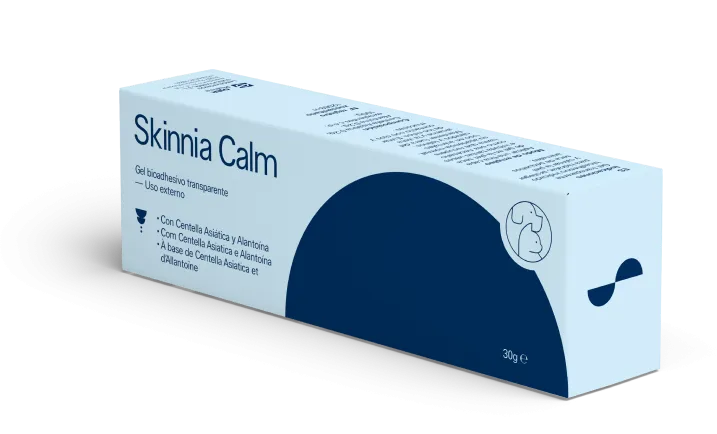PATHOLOGIES WE TREAT
Flea Allergy Dermatitis

Introduction
Flea Allergy Dermatitis (FAD) is an allergic skin condition that primarily affects pets over one year old. It is commonly observed in dogs and cats with underlying skin diseases, such as atopic dermatitis. Pets with FAD often experience skin damage due to constant scratching, biting, or licking, which can lead to secondary infections.
Causes
FAD is caused by a hypersensitivity reaction to proteins in flea saliva. This condition is more common in warm and humid climates, which promote flea proliferation.
Often, flea control treatments are used inconsistently, leaving pets vulnerable to infestations during unprotected periods. To prevent this, it is important to apply treatments according to your veterinarian’s recommendations, ensuring year-round flea protection for your pet.
Symptoms
- Intense pruritus (itching): Typically occurs in the caudal areas of the animal, especially near the tail.
- Papules: Small bumps on the skin, often accompanied by excoriations from scratching.
- Presence of fleas or flea dirt: Small dark specks visible on the pet’s coat.
- Secondary infections: These may result from excessive scratching or licking and can include bacterial infections or yeast infections caused by Malassezia.
Diagnosis
The diagnosis of FAD is based on the pet’s clinical history, symptoms, and a detailed physical examination to identify signs of flea infestation, such as live fleas or flea dirt (small dark specks). In some cases, intradermal or serological tests may be conducted to identify allergic sensitivities, though these do not directly confirm the presence of fleas.
Treatment
Treating FAD starts with strict flea control, which involves treating all animals in the household and disinfecting the environment, as fleas can survive in carpets, bedding, and furniture.
To alleviate symptoms and improve the animal's well-being, topical treatments play a vital role. Products like Skinnia Calm help soothe irritated skin, reduce inflammation, and promote skin regeneration. In cases of severe itching, glucocorticoids or antihistamines may be necessary to control pruritus. Secondary infections should also be treated with antimicrobials as prescribed by a veterinarian.
Prevention
- Regular flea control for all pets year-round.
- Frequent cleaning of the environment to eliminate eggs and larvae.
- Skin care: Use topical products like Skinnia Calm to strengthen the skin barrier.
- Avoid infested areas and schedule regular veterinary check-ups.
Patel, A. & Forsythe, P. (2008). Saunders Solutions in Small Animal Practice. Veterinary Dermatology (1st edition). Saunders Elsevier.
Elsheikha, Hany & Wright, Ian. (2014). Flea infestations: epidemiology, treatment and control. The Veterinary Nurse. 5. 261-269..
Müller, G. H., Kirk, R. W., & Scott, D. W. (2012). Small Animal Dermatology (7th ed.). Saunders Elsevier.
Noli, C, Foster, A y Rosenkrantz, W, Veterinary Allergy, 2013; 1.ª edición, Wiley Blackwell, Nueva Jersey.

Bioadhesive transparent gel indicated to moisturise, protect and soothe the dry skin of small animals.